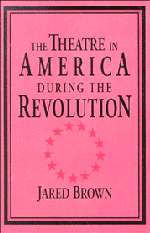Book contents
- Frontmatter
- Contents
- Preface
- Prologue
- SETTING THE STAGE: BEFORE THE REVOLUTION
- SETTING THE STAGE: BRITAIN ASCENDANT
- 5 The Drama of the Revolution
- 6 British Military Theatre, 1778–1779
- 7 British Military Theatre, 1779–1782
- SETTING THE STAGE: AMERICA ASCENDANT
- SETTING THE STAGE: AMERICA TRIUMPHANT
- Epilogue
- Appendix
- Notes
- Bibliography
- Index
6 - British Military Theatre, 1778–1779
Published online by Cambridge University Press: 29 September 2009
- Frontmatter
- Contents
- Preface
- Prologue
- SETTING THE STAGE: BEFORE THE REVOLUTION
- SETTING THE STAGE: BRITAIN ASCENDANT
- 5 The Drama of the Revolution
- 6 British Military Theatre, 1778–1779
- 7 British Military Theatre, 1779–1782
- SETTING THE STAGE: AMERICA ASCENDANT
- SETTING THE STAGE: AMERICA TRIUMPHANT
- Epilogue
- Appendix
- Notes
- Bibliography
- Index
Summary
Sir henry clinton succeeded William Howe as commander in chief of the British army in America in 1778. Clinton's officers in New York wasted no time announcing their intention to continue the tradition of military theatricals established by Howe's thespians. A notice appeared in Rivington's Royal Gazette on January 3, 1778:
By Permission of his Excellency
Sir henry clinton, Knt of the Bath, &c.
The theatre will be Open'd early next week, by a Society of Gentlemen of the Army and Navy, for the laudable Purpose of raising a Supply for the Widows and Orphans of those who have lost their Lives in his Majesty's Service, as well as for such other generous Charities as their Funds may enable them to perform; It is hoped that the good Intention of these Gentlemen will meet with the Indulgence of all those who are actuated by the same liberal Principles. Notice will be given in the next Paper of the first night of Performance, and every attention paid to render it a rational entertainment. Tickets will be delivered out at Mr. Rivington's, Mr. Hugh Gaine's, and Mills and Hick's Printing Houses, at both Coffee-Houses, and at Marshal's Tavern, opposite to the Theatre in John-street, and the Managers request that the Ladies will send servants in time to keep Places for them in the Boxes, that they may be more agreeably accommodated.
- Type
- Chapter
- Information
- The Theatre in America during the Revolution , pp. 85 - 108Publisher: Cambridge University PressPrint publication year: 1995



